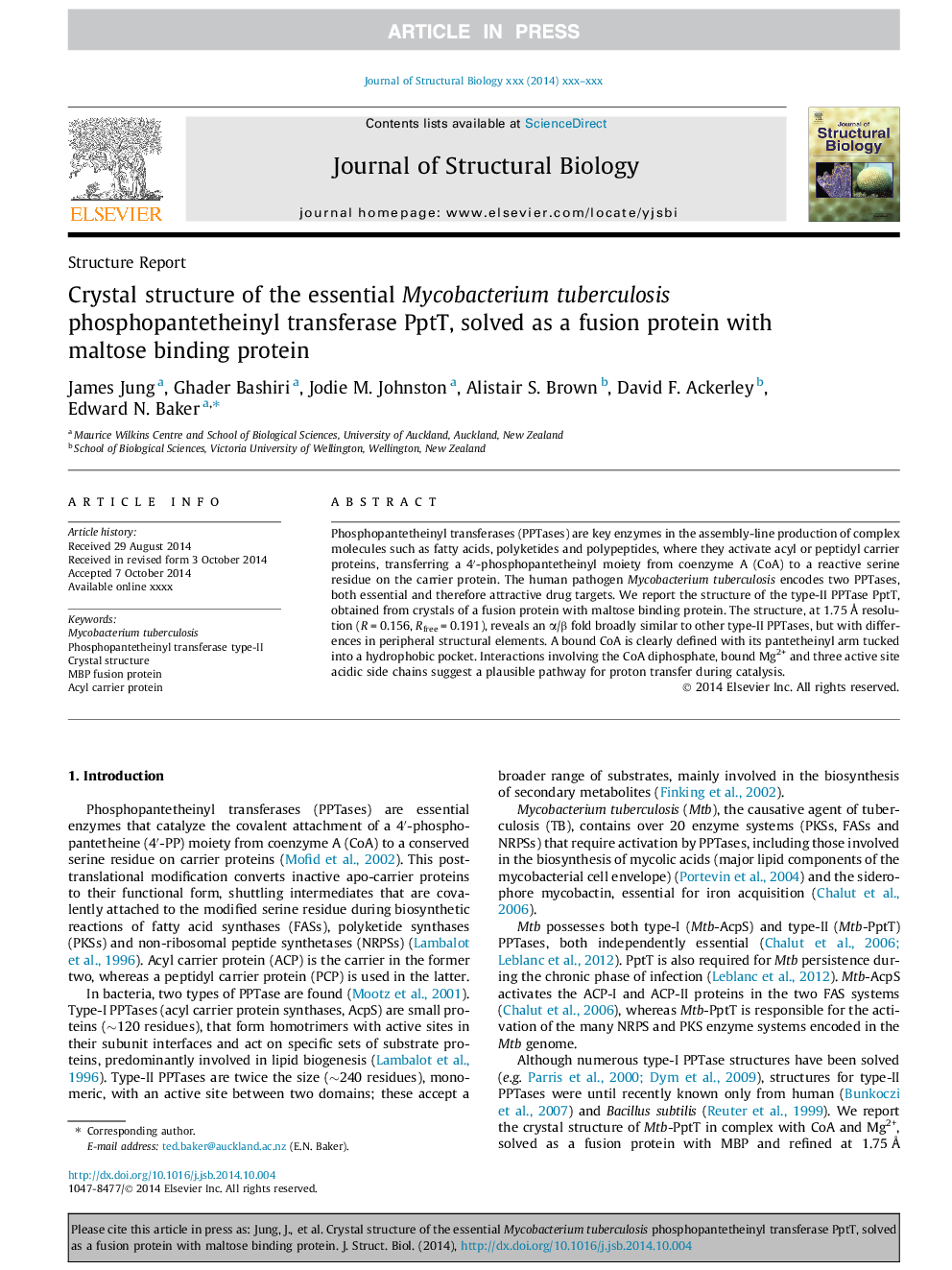| Article ID | Journal | Published Year | Pages | File Type |
|---|---|---|---|---|
| 5913977 | Journal of Structural Biology | 2014 | 5 Pages |
Abstract
Phosphopantetheinyl transferases (PPTases) are key enzymes in the assembly-line production of complex molecules such as fatty acids, polyketides and polypeptides, where they activate acyl or peptidyl carrier proteins, transferring a 4â²-phosphopantetheinyl moiety from coenzyme A (CoA) to a reactive serine residue on the carrier protein. The human pathogen Mycobacterium tuberculosis encodes two PPTases, both essential and therefore attractive drug targets. We report the structure of the type-II PPTase PptT, obtained from crystals of a fusion protein with maltose binding protein. The structure, at 1.75Â Ã
resolution (R = 0.156, Rfree = 0.191), reveals an α/β fold broadly similar to other type-II PPTases, but with differences in peripheral structural elements. A bound CoA is clearly defined with its pantetheinyl arm tucked into a hydrophobic pocket. Interactions involving the CoA diphosphate, bound Mg2+ and three active site acidic side chains suggest a plausible pathway for proton transfer during catalysis.
Related Topics
Life Sciences
Biochemistry, Genetics and Molecular Biology
Molecular Biology
Authors
James Jung, Ghader Bashiri, Jodie M. Johnston, Alistair S. Brown, David F. Ackerley, Edward N. Baker,
